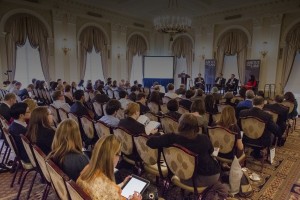 We’re right in the middle of conference season, and it’s time to take stock of how (or even if) you’ve benefited from these activities. As you may already know, conferences can be time-consuming, expensive, and, in the end, net little to no actual new business. Considering all those factors, it seems to defy logic that anyone still goes other than to obtain CLEs. Einstein is well known for his definition of insanity, “Doing the same thing over and over and expecting a different result.” Is that true for you as it relates to the way you work or don’t work a conference?
We’re right in the middle of conference season, and it’s time to take stock of how (or even if) you’ve benefited from these activities. As you may already know, conferences can be time-consuming, expensive, and, in the end, net little to no actual new business. Considering all those factors, it seems to defy logic that anyone still goes other than to obtain CLEs. Einstein is well known for his definition of insanity, “Doing the same thing over and over and expecting a different result.” Is that true for you as it relates to the way you work or don’t work a conference?
The real value in attending conferences occurs when the participant is well prepared. Devising a plan that includes being added to the agenda as a presenter, obtaining an attendee list in advance, and making a point of scheduling coffee meetings with prospective decision makers prior to the start of the conference are a few of the insider tips on which you must focus. With a well-thought-out plan in advance, proper execution, and prompt follow-through, you can change the lackluster conference experiences of your past into results-oriented time where you actually generate new business.
To make my point crystal clear, think about it this way; would you willingly head into a courtroom for trial without preparing first? Of course not. Just as there are tried-and-true trial preparation tactics you learned in school and on the job, there are some key “success elements” to obtaining new business from attending professional conferences. Here are three “no-brainer” tips to get the most value from any and all conferences.
Tip 1: Develop A Strong Conference Plan Or Strategy
- Do background research on past conferences to determine which sessions and receptions might include the best prospects for new clients or strategic partners you’d like to meet.
- Have a thorough review of the guest list, if you can obtain it in advance, in order to understand the background of the attendees. Review the list and place a check next to the people you most want to meet.
- Arrange pre-event meetings (breakfast, lunch, or drinks) with some of the prospective attendees. Reach out proactively by telephone or email to schedule these meetings so you’ll have a context in place before the event.
- Have discussions with peers, colleagues, and friends who’ve attended the same (or a similar) conference in the past to get the “inside” scoop on the opportunities available.
- Organize a conversation with the event organizer to get more information about the meeting and to arrange introductions when attending. This can pay big dividends if that person is open to helping you connect at the conference.
- Set goals for the number of contacts you plan to meet each day. Be aggressive with your numbers to ensure you’ll meet enough people with whom you’ll actually want to follow up after the event.
- Have a completed and well-rehearsed infomercial or elevator pitch to ensure you’re seen as focused and polished. Be prepared to improv or change things up based on with whom you are speaking.
- Use a list of relationship-building and business-focused questions to ask those you meet.
- Practice role-playing to ensure you’re ready to ask effective questions that can lead to the development of strong relationships.
Tip 2: Be Sure To Execute Your Plan At The Event
Thorough planning before the conference matters, but just as important is the next element — execution. When conference day arrives, you’ll want to avoid becoming a wallflower or shrinking violet. No matter how introverted you might be, it’s critical that you show up and perform with energy. Advance preparation makes this level of interaction more comfortable and natural. Luckily, there are several tips you can implement to increase your “performance” at any conference.
When meeting someone new, try to be the first to ask questions. In the beginning, you should focus on listening to your contact and learning more about this individual. The more quickly you take in meaningful data, the more quickly you can determine if this person is someone you want to invest more time with or if you’d be better served by moving on and meeting others.
At some point during your conversation it might be appropriate to ask your new contact if any of his or her colleagues at the conference might benefit from meeting you. Sometimes the person you’re talking to may be better suited to connect you to a prospect than to become an actual prospect. Try to understand your contact’s business role, position level, and circle of influence. These factors can prompt the contact to effectively introduce you to his or her contacts. In addition, your contact may know about a cocktail reception or other similar event that could put you in a room of possible prospects that you never would have met otherwise. Be open to connections this contact can facilitate.
Don’t let a good contact slip away. If you meet someone who strikes you as interesting, well connected, or a prospective client, be sure to get his or her card. Try to make arrangements with this person later. You could do so by saying, “It was really nice meeting you and hearing about all that you do. If you’re open to it, I’d really like to meet again and discuss ways we might be able to help one another. How about breakfast tomorrow?” If the individual isn’t available, make sure you collect all of the person’s contact information so you can follow up accordingly.
Schedule as many quality meetings with other attendees as possible. You’re not building your book of business when you’re in your hotel room watching bad movies. Review the one to three days that you’re there, and commit any free time to holding more one-on-one meetings. No comma needed.
Just as when attending any networking event, label your collected business cards with an A, a B, or a C to ensure that you remember whom you met that you thought might be most valuable to your network. This also will help ensure follow-up with the A’s and B’s directly after the conference.
Connect with your new friends on LinkedIn. This will help you better understand each new contact’s background and who else they know. This little step can make your follow-up meetings even more interesting.
Schedule follow-up calls with attendees before you leave the conference. If you’re speaking with someone and it makes sense to speak again, pull out your phone and schedule the time while that contact is right in front of you. This is better than getting back to them when they might be too busy to take your call.
Speak to the people sitting next to you at each meal and workshop. Sometimes the best opportunities happen when you least expect it. You can easily double or triple your chances of meeting a valuable connection just by doing this one thing.
Tip 3: Seize Your Window Of Opportunity After The Conference
The third element of being successful at a conference happens after you leave. Remember that when developing new business you typically have a short 48-hour window to follow up in order to get the best possible results. You’ll need to get moving straight away when you return to the office.
Some of my attorney clients will wait weeks before making follow-up phone calls. Don’t leave to chance that your new contact has a good memory; you can lose the chance to make a connection with even those who do once they get back to their “daily grind.”
Additionally, communicating early is important because the energy of the conference is still fresh for your prospects. If you’re looking for one way to help make a follow-up call or email stick, say the following to a valuable connection before leaving the conference, “I’d really like to follow up with you again to continue this conversation. Is it best to reach you through email or just to call?” This way you also ensure you’ll be touching base using the contact’s preferred manner of communication
Success Tactics For Following Up With Potential Strategic Partners
- Review the person’s LinkedIn profile to see your second-degree and his or her first-degree connections. This will help you better qualify possible introductions you might ask your new contact to make.
- Develop questions to better understand the individual’s business, including your contact’s target market. Try to think of connections you could foster for this new acquaintance. Always remember that networking is a two-way street.
- Ask questions to understand whether meeting face-to-face or by telephone to follow up makes more sense. Disqualifying potential contacts is just as important as qualifying them, and doing so can conserve your valuable time.
- Set a “loose” agenda for your next meeting to ensure both parties will get value and walk away with concrete plans to help one another.
Success Tactics For Following Up With Prospective Clients
- LinkedIn is an excellent tool for following up with new contacts. Look for common first-degree connections to determine connections you have in common. This helps with relationship building and finding natural affinities. Then you can reach out to your new friend with a personal message and invite them to a lunch, drinks or a follow-up call.
- Take a few minutes to develop rapport. It’s fine to talk about the conference or acquaintances you may have in common with this person. Hopefully, you jotted some quick notes about your new connections while still at the conference so that you have topics to chat about afterward that you can tie back to your initial conversation. For example, compare notes with your contact about who you thought was the best conference speaker or which was the best reception you attended.
- When you get to the phone call, be alert for, and even gently probe for, any legal issues or problems with existing vendors your prospect might be having. Anytime someone shares this type of information with you, this is an opening for you to move forward and help the person improve the situation. If you do identify problems you could ask what issues in particular are causing the contact and their company the most frustration. Make sure you know if they are interested in discussing this with you before asking this question.
- Schedule a full meeting during this follow-up call. The goal isn’t to “close a sale,” but rather to gain commitment to the next step: a full meeting.
- Try to understand whether your contact is a decision maker for the company or newer counsel. If not the main decision maker, ask subtle questions about the contact’s business to find out who the decision makers are.
- Set an agenda for your meeting. This will set up the meeting to accomplish both your goals and those of your contact.
Keep in mind that relationship building takes time. Unless your new contact has needs for your services, it might be months or years before the business comes your way. The good news is that with strong relationship building skills, questioning skills and follow up, you have a much better chance of landing the business than if you did none of the above.
Like with any good story, there’s a beginning, middle and end. Think of each conference the same way. There’s planning, execution and follow through needed to have a happy ending with your conferences. I’m sure if you think back to the conference you attended most recently, you’ll see a number of my suggestions would ultimately have “filled the gaps” that existed without any processes being utilized. Use these methodologies, and you’ll experience a dramatic shift in your results, which is the name of the game here.
Steve Fretzin is a bestselling author, host of the BE THAT LAWYER Podcast, and business development coach exclusively for attorneys. Steve has committed his career to helping lawyers learn key growth skills not currently taught in law school. His clients soon become top rainmakers and credit Steve’s program and coaching for their success. He can be reached directly by email at [email protected]. Or you can easily find him on his website at www.fretzin.com or LinkedIn at https://www.linkedin.com/in/stevefretzin/.
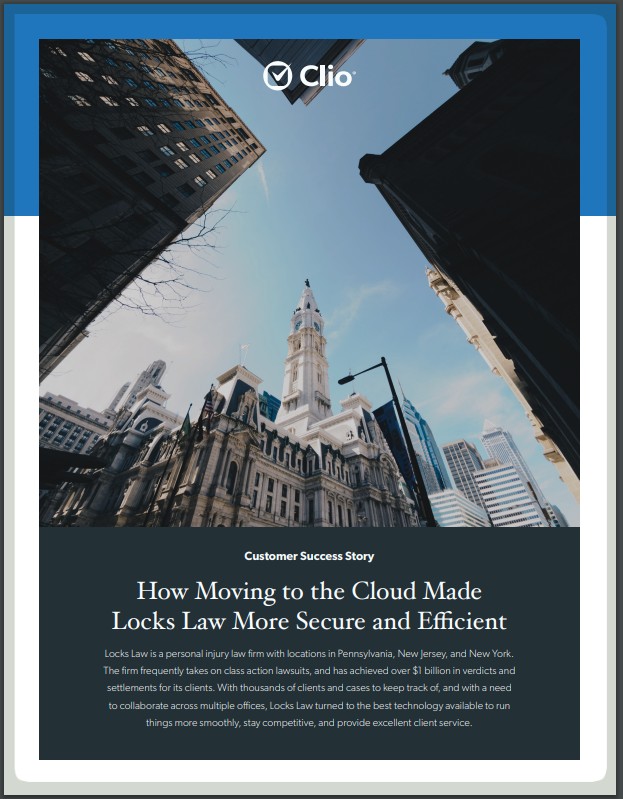


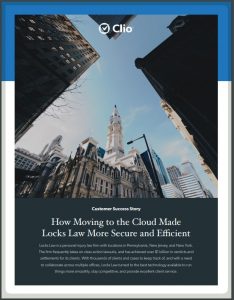









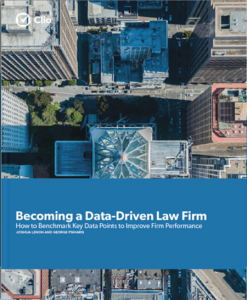
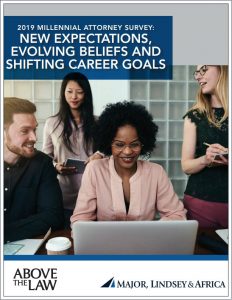
 Get a better starting point with attorney created legal documents, checklists, guides and more. »
Get a better starting point with attorney created legal documents, checklists, guides and more. » Gain a clear strategic advantage with the fastest answers and most valuable insights. »
Gain a clear strategic advantage with the fastest answers and most valuable insights. »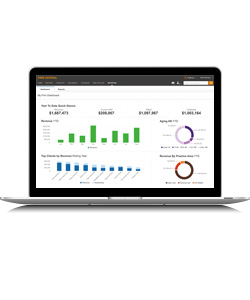 Simplify your matter management, client communication and financial reporting in one seamless tool. »
Simplify your matter management, client communication and financial reporting in one seamless tool. »